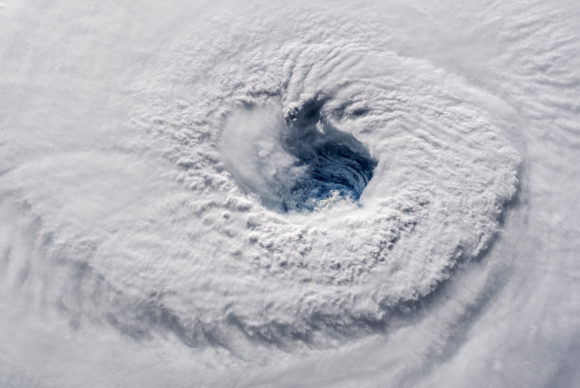Global warming has already driven an 11% increase in insured wind losses and those losses will grow by an additional 10% to 19% by 2050, Karen Clark & Co. said in a paper released Monday.
The catastrophe risk modeling firm said climate change hasn’t increased the frequency of hurricanes in the North Atlantic, but has increased the proportion of major storms — those that reach Category 3 to 5 intensity on the Saffir-Simpson scale. Historically, 32% of tropical cyclones reached those levels, but climate change has increased that to 36% and the proportion of major storms will grow to 37% in 2050 if emissions are reduced significantly and 40% if they are not, KCC said.
The report says the global average temperature, both sea and land, has increased 1.1 degrees Celsius since 1900. That may have led to a 2.75% increase in hurricane wind speeds since 1900.
KCC said there is observational evidence to support the hypothesis that major storms are becoming more frequent. There have been eight hurricanes with peak wind speeds exceeding 170 mph in the past 20 years, but only four during the previous two decades.
“Because the force applied by wind on structures increases exponentially with the wind speed, insured property losses respond non-linearly to an increase in hurricane intensity,” the report says. “Sensitivity studies show that a 2% increase in wind speeds leads to a 10% to 12% increase in losses, for example.”
The report examined potential warming using five scenarios, ranging from an “optimistic” projection that assumes the world’s nations will move aggressively to meet a “net-zero” target by 2050, to the most pessimistic projection that assumes rapid global economic growth supported by heavy investment in fossil fuel energy.
In the worst case scenario, the average global temperature increases by 3.6 degrees Celsius in 2100. In the best case, the average temperature increases another 0.4 degrees by 2030 but drops to only a 0.3% increase over the current average in 2100 and continues to head downward.
KCC said scientists have observed an increase in average sea surface temperatures since 1900, but the warming has been uneven. In the North Atlantic, water temperatures along the coast of the northeastern United States have increased by 2.5 degrees Celsius, but mid-Atlantic temperatures have increased by 1 degree or less and a region south of Greenland have actually decreased due cool water running off of melting glaciers.
The warming temperatures increase the intensity of hurricanes, but the frequency of storms depends on other aspects, such as vertical wind shear and the amount of moisture. Some of those trends promote cyclone formation but others work against it.
“As a result, the consensus among scientists is that there has been no trend in tropical cyclone frequency due to climate change,” the report says.
Storm intensity, on the other hand, is projected to increase in proportion to the rise in ocean temperatures. In the worst case scenario, wind speeds will increase an additional 3.25% over 2020 levels. In the best case scenario, the wind speed increase is only 1%.
KCC said it has modified its catastrophe models to add previously unlikely events, such as a Category 5 storm with a large radius of maximum wind speed, to the “catalog” of events that is used to project potential losses.
The risk is not spread evenly. KCC said only two location in the United States — Miami and Galveston/Houston metropolitan areas — have greater than a 1% chance of suffering a one-in-100-year hurricane loss of $170 billion. A major hurricane strike on New York City has the potential to create losses of that amount, but the probability of that occurring is much less than 1%, the report says.
KCC said it plans to release a future report that examines the impact of climate change on inland and coastal flooding.
Was this article valuable?
Here are more articles you may enjoy.


 Insurance AI Demo Day Calendar Announced
Insurance AI Demo Day Calendar Announced  Apollo Expands Asset-Level Risk Reviews to Reflect Impact of Extreme Weather
Apollo Expands Asset-Level Risk Reviews to Reflect Impact of Extreme Weather  Poorer Americans Dropped Federal Flood Insurance When Rates Rose
Poorer Americans Dropped Federal Flood Insurance When Rates Rose  Marijuana’s Move to Schedule III: What it Really Means for Cannabis Insurance
Marijuana’s Move to Schedule III: What it Really Means for Cannabis Insurance 